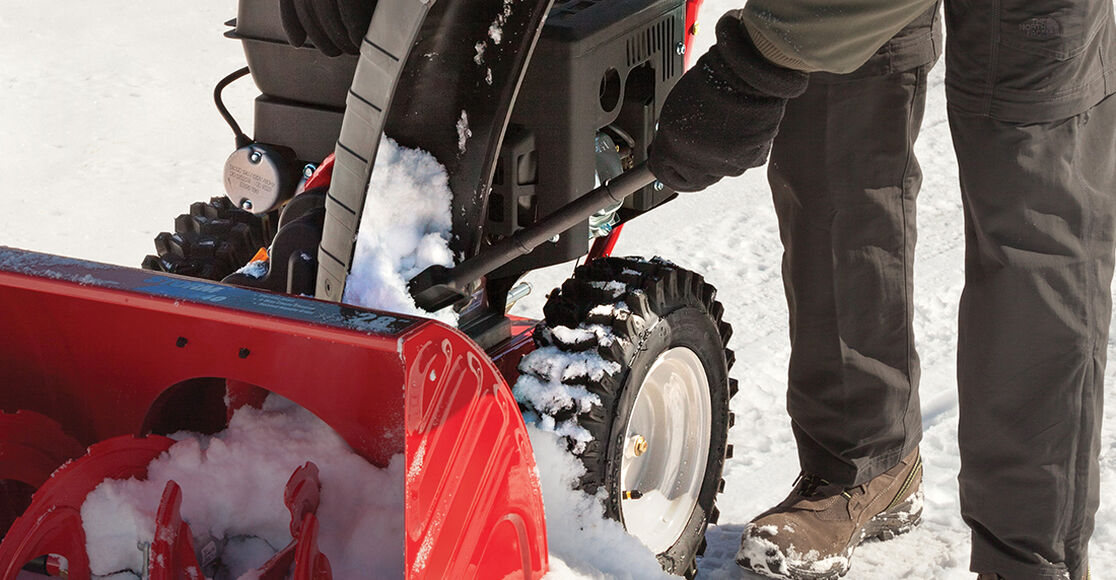It’s that time of year: snow season. Whether you’re unwrapping a brand-new snow blower or dusting off an old one, Troy-Bilt is here to help with a few quick snow blower safety tips to make sure you stay safe and get the most out of your machine. Always remember to consult your owner's manual for specific directions for your model.
Having the right equipment, understanding how it works, planning your clearing route, and dressing appropriately for the weather are important details to consider. Preparation is key to successfully removing snow and getting back to enjoying the best that winter has to offer.
Make sure you are familiar with how to properly operate your snow blower and know how to stop the machine and disengage it quickly. Never allow children under 14 years of age to operate a snow blower, and children ages 14 and over should read and understand the instructions and safe operation practices that are described in your owner’s manual.
Clear snow before driving over it with your vehicle to aid in driveway snow removal. Paired with freezing temperatures, your vehicle’s weight can compress snow and create ice that is extremely difficult to remove and dangerous to walk on.
Plan your snow throwing pattern to avoid discharge of material toward roads, bystanders, and the like because thrown objects can cause serious personal injury. Keep bystanders, pets and children at least 75 feet from the machine while it is in operation. Stop the machine if anyone enters the area. Thoroughly inspect the area where the equipment is to be used. Remove all doormats, newspapers, sleds, boards, wires and other foreign objects that could be tripped over or thrown by the auger/impeller.
Take care to dress appropriately: Do not wear jewelry, long scarves or other loose clothing that could become entangled in the moving parts of the snow blower. And always wear safety glasses or eye shields during operation and while performing an adjustment or repair to protect your eyes. Thrown objects that ricochet can cause serious injury to the eyes.
Never operate a snow blower without good visibility, and never use your hands to clear a clogged chute assembly. If you need to clean the chute, then shut off the engine and remain behind the handles until all moving parts have stopped before unclogging. The chute cleanout tool is conveniently fastened to the rear of the auger housing with a mounting clip. To use, simply take the shovel-shaped tool to break down and remove ice and snow that have collected in the chute to help keep the snow blower from clogging.
Other snow blower safety tips include:
- Exercise extreme caution when operating on or crossing gravel surfaces.
- Do not use a snow blower on steep slopes. Use extreme caution when clearing snow from mild slopes.
- Exercise caution to avoid slipping or falling, especially when operating in reverse.
- Use a grounded three-wire extension cord and receptacle for all machines with electric-start engines.
- Adjust the collector housing height to clear gravel or crushed rock surfaces.
- Disengage all control levers before starting the engine.
- Never attempt to make any adjustments while the engine is running, except where specifically recommended in the owner’s manual.
- Let the engine and machine adjust to the outdoor temperature before starting to clear snow.
- Never run an engine indoors or in a poorly ventilated area.
- Never operate with a missing or damaged chute assembly. Keep all safety devices in place and working.
- Do not put hands or feet near rotating parts, in the auger/impeller housing or in the drive chute assembly. Contact with the rotating parts can amputate hands or feet.
- The auger/impeller control lever is a safety device – never bypass its operation. Doing so makes the machine unsafe and may cause personal injury.
